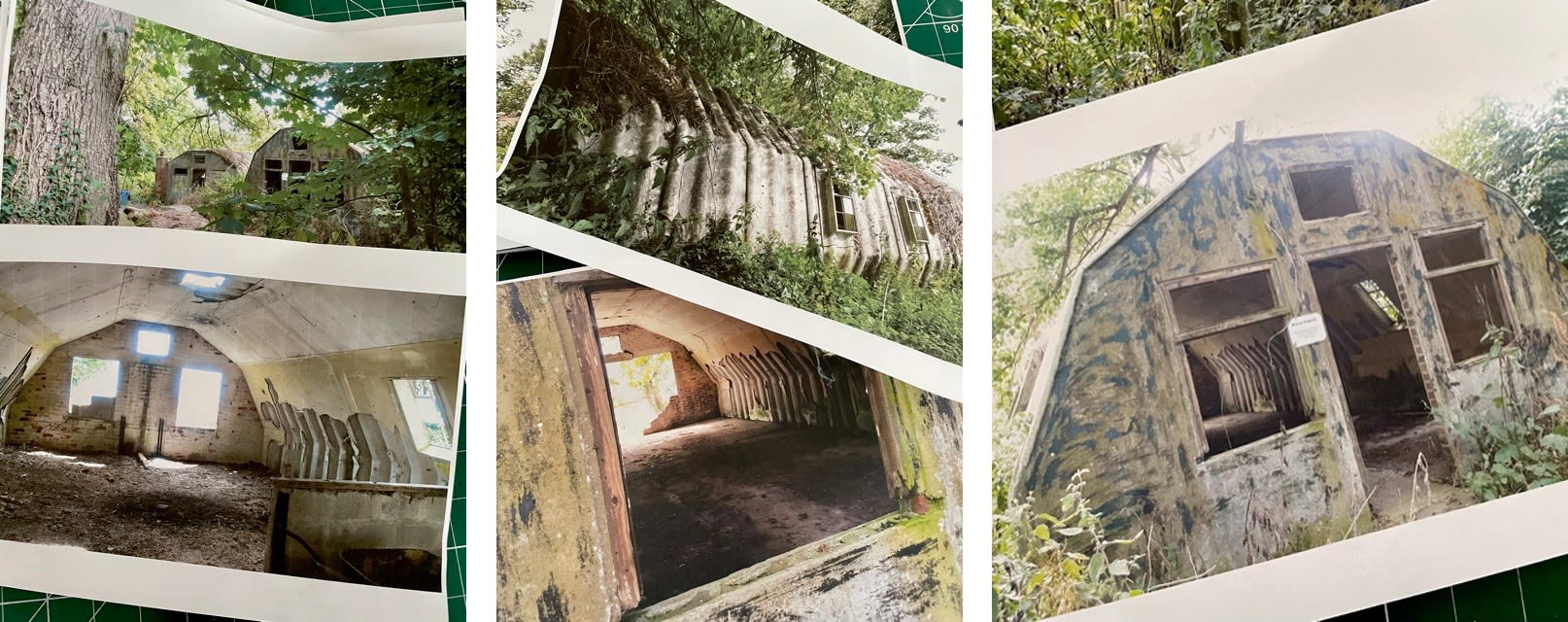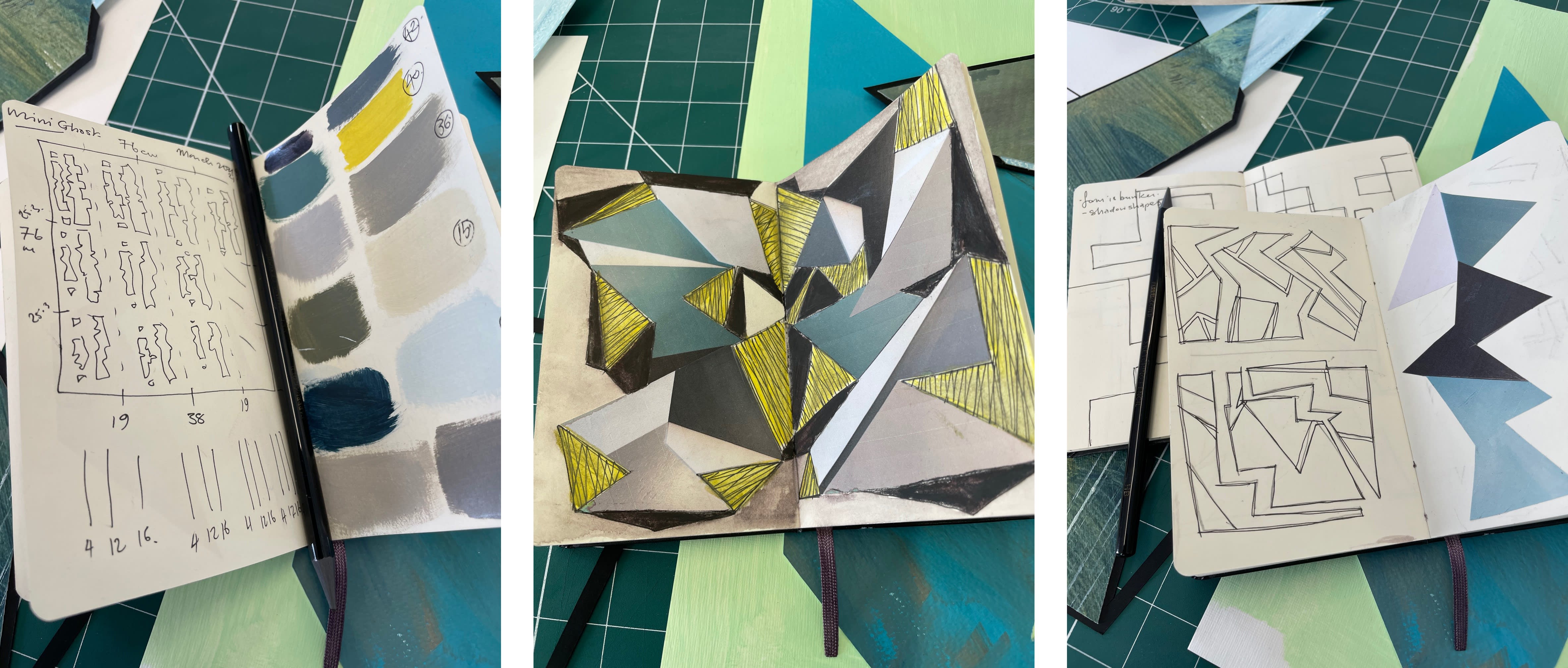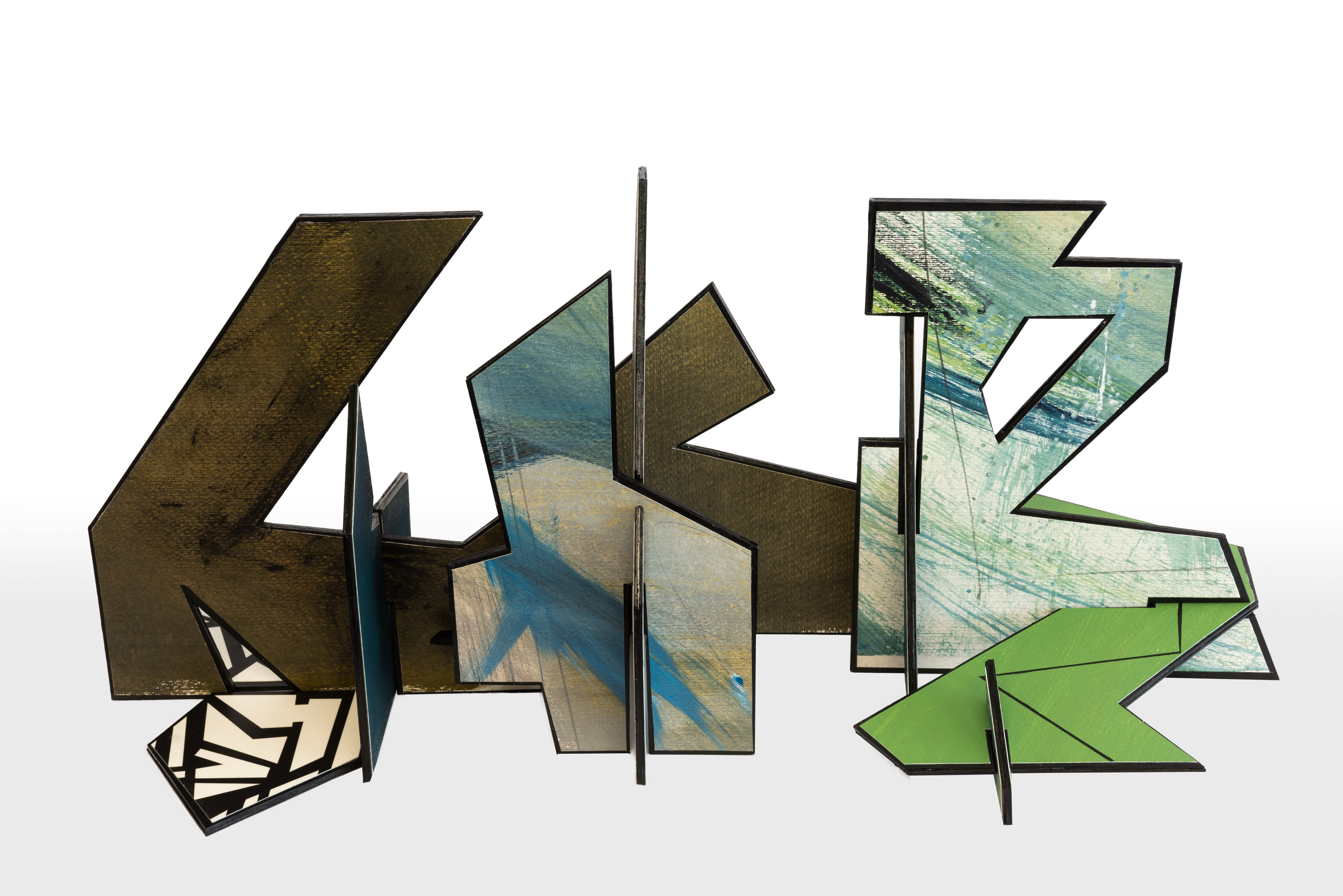Lisa Traxler is a multi-disciplinary artist, combining painting and 3D form depicting landscape and architectural spaces, creating an environmental autobiography - a sense of self and place intimately connected. Lisa works from her studio, an extraordinary converted WW2 radar bunker on the Isle of Wight, and we were thrilled to get a virtual tour around.
Be sure to watch the video below to get a closer look at Lisa's studio and gain some insight into her creative practice - and we hope you enjoy the interview!
Could you start by telling our readers a little bit about you and your work?
"My multi-disciplinary approach means I work both two and three dimensionally, each informing the other. My practice explores associations with construction and assemblage working with component forms both through my collage paintings in acrylic and watercolour for the Royal Watercolour Society at Bankside Gallery or through my three dimensional sculptural works as part of the Royal Society of Sculptors. The route from wall based to floor standing feels a natural evolution as if taking pattern pieces and constructing a garment. This, no doubt, has its origins in my previous life in London as a fashion editor and costume designer."

Where does your initial starting point come from?
"The body of work that I have been evolving started several years ago when my partner and I bought a WW2 derelict radar bunker on the South of the Isle of Wight. Throughout the process of making this our home the challenges and inspirations from the project led me to research the history of the bunker. Visits to the Imperial War Museum and research into defence architecture have been a rich seam to mine. I become excited to unearth a back story to my work. Each part of it requires an intrinsic meaning and through this the work unfolds."
Is there a particular mode of practice that kick starts your work?
"I let the research guide me, giving depth to the thought process. During the bunker build my research was aligned with the physicality of the build itself, thus informing the shapes that evolved from my studio where I retreated to make sense of what was happening around me.
"Alongside the maquette making I keep sketchbooks. These are ‘project books’ - research and real life cross influence each other as to the nature of the work combining two and three dimensional form."

So your sketchbooks are pretty central to your creative practice?
"My sketchbooks are an important visual diary in my practice. They hold scribbled notes, thought process on construction, collaged papers, colour references, shapes in the shadows, minimal line drawings or simply words that have activated a thought or memory. To collate all these working strands into these small notebooks is a useful tool."
And what about colour, what part does it play in your practice?
"My palette unfolds itself as I paint. I don’t generally work out the colour range but let intuitive action take place. Almost as if an instinctive reaction is happening; the influences of the research from books and museums but also my everyday surroundings and the landscape of my living. The colours then have an emotional quality to them, drawn from somewhere deep to interpret my thoughts."

Does your use of form evolve through drawing? If so, is it from reality?
"My wall based collage paintings and 3 dimensional assemblage paintings are revealed through an intricate system of arranging and cutting shaped forms. These cut forms are my drawings, the abstract ‘working out’ of a piece. Sketches from my project books may inform or a need to carry the shape off the wall to an assemblage piece which then may re-inform the wall painting again. These unique ‘pattern pieces’ are constructed into small assemblages and relief configurations. Although these abstract shapes appear unspecified they are based upon the defence architectural references and camouflage research. Working back and forth from two to three dimensional forms creating greater possibilities and spatial narrative. Each piece is dependent on its neighbour to form the completed painting, both 2 and 3 dimensionally."
How has this past year impacted you, both personally and professionally? Have you found that your relationship with making and painting has changed at all in response to the pandemic?
"As the pandemic closed the world down my studio became even more important to me. I feel, as artists, we work in seclusion and solitude most of the time and this became heightened with the noise of the outside world quietened. From the frenzy of putting a major show together, I had just had news a duo exhibition at Quay Arts had achieved Arts Council Funding, to life coming to an abrupt halt was disconcerting. I turned inwards to my studio and myself and let the days unfold in this unusual creative vacuum. I went into lockdown with works for the exhibition uncertain but I had to trust this time would gift me purpose and the determination to resolve this. In order to do this I had to relinquishing control and surrender to the ebb and flow of everyday. This is when the possibilities of connecting painted planes with structure were encountered. The outcomes, so far, have been incredibly exciting and have led to new works and in turn further exhibitions."

What’s next for you? Have you any exciting projects coming up?
"Delayed by almost a year, the ACE funded show ‘Dazzle + Disrupt’ has now launched. We are all learning to work in new ways and this exhibition has a strong online presence as we gradually experience coming out of our third UK lockdown. The exhibition is anticipated to open on 17th May - 13th June 2021 for visitors to the gallery, meanwhile you can take a 360 virtual tour or listen to artist interviews and follow worksheets here.
"A second exciting project is that I was successful with a further funding bid with Arts Council England and have a solo exhibition, Blast Wall from 13th May - 19th June 2021 at The Foundry Gallery, Chelsea, London. Please get in touch with me if you would like to attend the opening event on Thursday 13th May. The award enabled me to create further new sculpture and painting all made through the lockdown period and responding to the notion of our home as a place of safety and sanctuary."
Thank you, Lisa!
Want to see more of Lisa's work? Head to her page here or visit her website.
Make sure to watch the full video above, follow us on Instagram and subscribe to our Youtube channel for more 'In the Studio' features!
More like this on the Blog...
Read: Abstract Art in 2020: Online Panel Discussion
Read / Watch: Linocut Printing: In the Studio with Anita Klein
Read / Watch: Relief Printing: In the Studio with Trevor Price
Watch: In the Studio with Bridget Moore.
Watch: In the Studio with Denis Ryan.
Watch: In the Studio with James Faure Walker.
